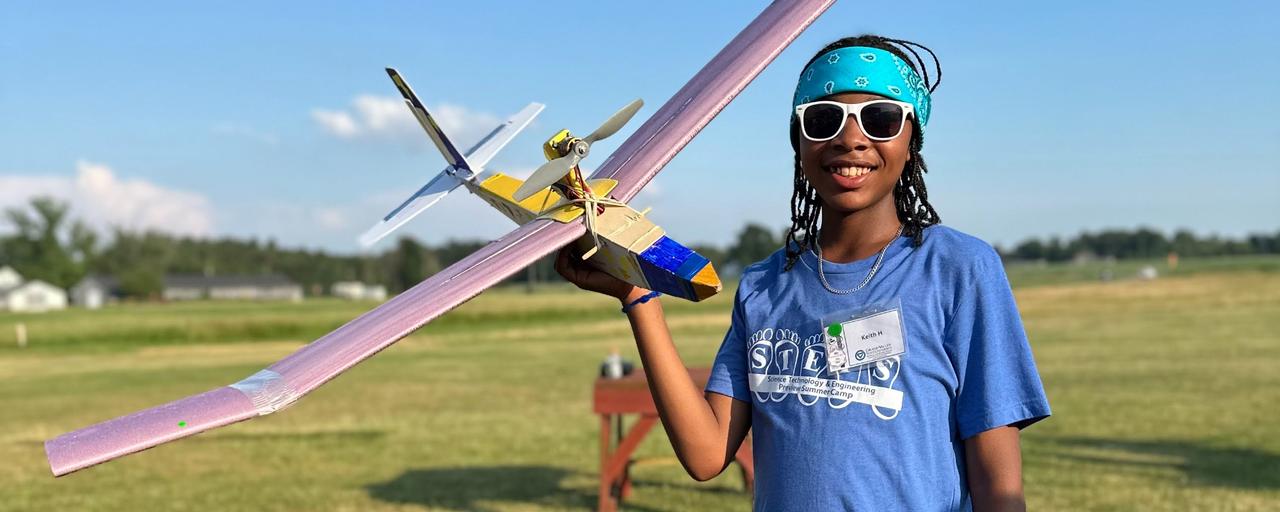Learn More About STEPS
History of STEPS at Grand Valley State University (2002-present)
The main objectives of STEPS Camp at Grand Valley State University are:
- building self-esteem, confidence, and self-efficacy,
- increasing content knowledge and interest in engineering, science, and technology, and
- nurturing teamwork
In 2002, Grand Valley State University duplicated a STEPS Program that was developed at University of Wisconsin-Stout in 1997. UW-Stout created the camp to address the lack of diversity they witnessed in their engineering courses, which was a direct reflection of the national statistics.
From 2002-2004, all of the STEPS activities were carried out on the Allendale Campus under the direction of the School of Engineering and the College of Liberal Arts and Science. STEPS was a residential camp, with campers staying in living centers from Sunday through Thursday. Volunteer groups, such as the engineers from Alcoa-Howmet Whitehall Operations, came to the campus to work with the campers. Early Enrichment classes included web page design, CNC machining, geocaching, and paper airplane design.
STEPS joined forces with the Regional Math and Science Center at Grand Valley State University in 2005, and transitioned to a day camp format. All of the STEPS programming also moved to the Kennedy and Keller Engineering buildings on the downtown Pew campus, including airplane construction. Enrichment classes continued to change from year to year, following camper interest and emerging topics. We have investigated renewable energy with solar and wind power modules, Computer Aided Drafting with additive manufacturing (3-D Printing), nanotechnology, and Arduino Fruit Drum. Since 2002, over 1,740 campers have graduated STEPS at Grand Valley. 92% of the participants at STEPS have identified as female. 29% of the participants have identified as coming from an underserved population.
Exposure to STEM concepts at an early age is important
Scientists and engineers work to solve challenges that concern our society and everyday life. Research shows that those pursuing STEM (Science, Technology, Engineering, and Mathematics) related careers is at a low number in the United States. It is critical that students are being exposed to the STEM field at an early age to gain an understanding of the importance of the role it plays in society.
According to studies, early exposure of STEM initiatives and activities positively impacts students’ perception of the field and interest in pursuing a related career. By gaining the attention of middle school students’ interest in the STEM field, they are more likely to consider course work in middle and high school that prepares them to enter a STEM degree program at an institution of higher learning. It is important to expose the youth to positive role models, support systems and instilling in them the importance of good math and science education. Non-formal education plays an important role in this issue. Programs outside the child's conventional environment help to inculcate positive attitudes towards science. Non-formal science activities provide opportunities for active learning, in a non-threatening environment, that allows the student to approach challenges of subjects, while using problem-solving abilities to find solutions.
For more information about the research supporting early exposure to STEM, visit America's Children: Providing early exposure to STEM (Science, Technology, Engineering, & Math) Initiatives

